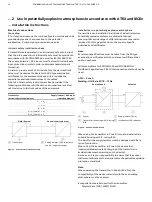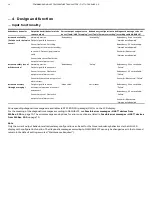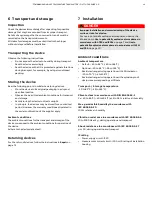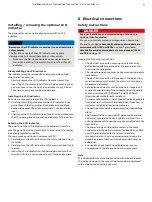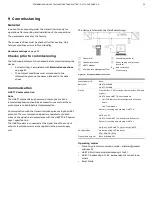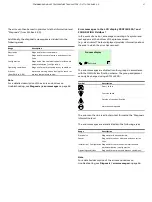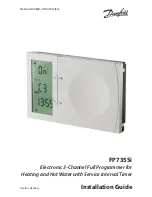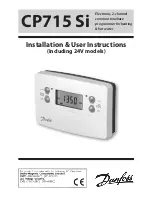
22
TTH300
HEAD-MOUNT TEMPERATURE TRANSMITTER | OI/TTH300-EN REV. G
… 8 Electrical connections
Protection of the transmitter from damage caused by highly energetic electric
interferences
The transmitter has no switch-off elements. Therefore,
overcurrent protective devices, lightning protection, or voltage
disconnection options must be provided at the plant.
For the shielding and grounding of the device and the
connection cable, observe
Terminal assignment
on page 23.
NOTICE
Temperature transmitter damage!
Overvoltage, overcurrent and high-frequency interference
signals on the supply connection as well as sensor connection
side of the device can damage the temperature transmitter.
A
Do not weld
B
No high-frequency interference signals / switching operations of large
consumers
C
No overvoltage due to lightning
Figure 14: Warning signs
Overcurrent and overvoltage can occur through for example
welding operations, switching operations of large electric
consumers, or lightning in the vicinity of the transmitter, sensor,
as well as connector cables.
Temperature transmitters are sensitive devices on the sensor
side as well. Long connector cables to the sensor can encourage
damaging interference. This can already happen if temperature
sensors are connected to the transmitter during installation, but
are not yet integrated into the system (no connection to the
supply isolator / DCS)!
Suited protective measures
The following items should be observed to protect the
transmitter from sensor-side damage:
• In the vicinity of the transmitter, sensor and sensor
connector cable in case of a connected sensor, high-energy
overvoltage, overcurrent and high-frequency interference
signals due to welding operations, lightning, circuit breakers
or large consumers of electricity among others should be
absolutely avoided.
• The connection cable of the sensor on the transmitter should
be disconnected when performing welding work in the
vicinity of the installed transmitter, sensor, as well as supply
lines from the sensor to the transmitter.
• This correspondingly also applies to the supply side, if there
is a connection there.
Conductor material
NOTICE
Danger of wire break!
The use of stiff cable material can lead to wire breaks in the
cables.
• Only use cable material with stranded wires.
Supply voltage
Power supply cable:
Flexible standard cable material
Maximum wire cross section:
1.5 mm
2
(AWG 16)
Sensor connection
Depending on the type of sensor, a variety of cable materials can
be used for connections.
The integrated internal reference junction makes it possible to
directly connect thermal compensating cables.



